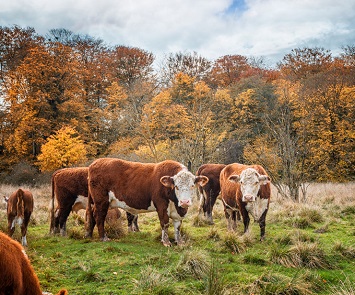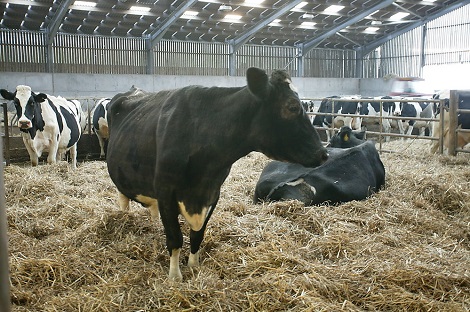
Epidemiology of Tuberculosis in Cattle
We study the epidemiology of tuberculosis in cattle using a combination of fieldwork and the analysis of big data.

Challenge
Bovine tuberculosis (bTB) is caused by infection with Mycobacterium bovis. It is the most pressing animal health problem in Great Britain. Around 40,000 cattle test bTB-positive each year and are slaughtered in an effort to control this disease. This comes at a cost to the taxpayer of around £100 million per year in surveillance testing and compensation.
The Government has a strategy to eradicate bTB in England by 2038. If this is to be achieved, we urgently need to improve our understanding of the risks associated with bTB in cattle, both at the individual and the herd level, so that the current bTB control policy can be enhanced. Knowledge of risk factors is not only essential to improve the understanding of bTB epidemiology. It can also help identify which farms would benefit from specific targeted intervention measures to aid disease prevention and control.

Solution
We conduct research on bTB epidemiology in cattle. Our projects focus on risk, diagnosis, surveillance, and control of this disease. We use a combination of approaches including:
Applying machine learning predictive classification algorithms to big datasets of cattle bTB test results. This enables risk factors to be robustly identified and cattle herds to be classified according to risk status. Knowing which herds are at high risk of spreading infection to others enables them to be targeted for specific additional disease control actions, supplementing the more generalised population-level measures applied to all herds.
Conducting fieldwork using technologies such as proximity loggers (on collars and fixed base stations) to record how often (and when and where) cattle and badgers come into contact. We use this information to inform farm biosecurity measures.
Modelling individual and herd-level changes to cattle bTB testing (including methods of diagnosis) to determine the benefits and costs of potential alterations to the system. This will affect how surveillance for bTB is conducted.

Impact
Our findings are widely published and regularly shared with Defra. Our research informs the UK Government’s bTB surveillance and management strategies, and well as research studies which aim to better understand the epidemiology of the infection in cattle. Examples of the impact of our research include:
- Using our models to identify the characteristics of farms at highest risk of becoming infected. This aids the detection of infected cattle, which is one of the top three current priorities to enhance the bTB eradication strategy.
- Simplified easy-to-adopt models were used to inform the targeted application of additional measures in bTB surveillance as well as disease control settings. This is particularly useful in high-risk areas, where their blanket application could be unfeasible or counterproductive (for example, if increasing the sensitivity of detection comes at the expense of an excessive number of false positives).
- We put forward proposals that describe how the models we developed could be adopted and deployed, minimizing the impact of their implementation on staff resources. This expands the use of software-based tools to not only gather and present “real-time” information on farm characteristics, but to use that information to run the models, identifying high-risk farms to be targeted with the additional disease control measures proposed.
Partners
We collaborate with colleagues at the Animal and Plant Health Agency. Some of our research is funded by Department for the Environment, Food & Rural Affairs (Defra).
